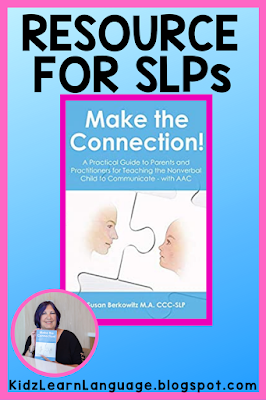Have you heard this from parents or staff? I have. Many times. You show staff and families what to do with a child’s AAC system, teach them how to model effectively, talk about using a robust core vocabulary. And then someone says; “But this kid can’t. That’s too hard. I’ll never be able to do that with him.”
We work with students who are severely disabled; sometimes in language, sometimes motorically, and sometimes in both of those and even more ways. But we need always to remember that we don’t really know what these students are capable of and what they are not.
We don’t know until we try. And even then, oftentimes it is not the child who “fails,” but US. We fail. We fail to find the teaching strategy or motivating activity or system of…….insert concept here.
Far too often I see people “give up” on teaching a student a skill because they haven’t “gotten it” yet, so they must not be able to. And far too infrequently do I hear teams say, “This isn’t working. What else can we do? What can we change? What else might work?”
There are a couple of buzz phrases floating around in special education. They include “Least dangerous assumption” and “Presume competence.” The second has become a bit contentious, as people ask, “What are we presuming, exactly? What is competence?”
Many of us agree that what we are presuming is that the child, with the proper instruction/intervention can, in fact, become more competent at communicating. We aren’t presuming that all of our AAC users will be Stephen Hawking. Most of us who are neurotypical would not ever be in line for that level of competence, communicating concepts that most do not understand. But we are presuming that our students do not need to be dependent on others for figuring out what their communication wants and needs are and meeting them.
I’m really excited to be able to provide some wide-spread answers; more widely spread than I am able to do in my little corner of the country (and even tinier corner of the world). I wrote a book, taking what I know about AAC implementation and trying to broach the topic from the point of view that, “You can do this!” I want to give parents and SLPs and teachers the tools they need to become effective partners in the process of teaching the child to communicate.
Then look at the 10 benefits of reading it. I’ll give you 5 right here:
- Learn how to assess the AAC needs of your children/students & what you need to know as a parent about AAC evaluations: Learn current trends away from discrete skills based assessments and towards genuine activity based evaluation. See how to set up child-centered activities and observations to evaluate your students’ skills and needs.
- Get simple solutions you can apply to your caseload or child tomorrow: You will come away with a variety of intervention activities that you can use right away, ideas for introducing and using AAC at home, and ideas for adapting classic therapy activities for nonspeaking learners.
- So many words, so little space....the lament of those who design AAC systems for their students. Learn how to manage your AAC system space effectively by using core and fringe vocabulary strategies.
- Take home templates for communication you can use right now: You will be given sample planning and intervening forms that you can begin to use right away
- Use what you already know as an SLP or parent to teach your students/child who use/s AAC: Many strategies for teaching language apply to all students with communication needs. Learn how to apply what you already know about teaching and learning strategies for language, as well as acquiring new skill sets to apply. Learn how to carry over these strategies to home activities so you can communicate with your child.
So, remember: there are no prerequisites for communication, and children - ALL children - can learn how to communicate effectively.






No comments
Post a Comment